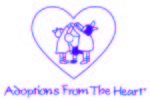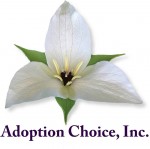I was looking over the program for an adoption conference recently. Parenting the Child Affected by Fetal Alcohol Syndrome, I read. The Attachment-Disordered Child: Paths to Hope. Syndromes Affecting the Post-Institutionalized Child. If we had encountered dire subjects like this before we adopted, I am not sure we would have gone through with it.
We were scared enough as it was. The first time, we were afraid that we wouldn’t love the child. (“I admire you,” a friend told us. She was the biological mother of two, a social worker famed for her work with abused children. “I don’t think I could love a baby that wasn’t mine.”) We were afraid that our child’s earliest environments–intra- and extra-uterine–would hurt her irreparably: afflict her with AIDS, Hepatitis-B, Fetal Alcohol Syndrome, ADHD, attachment disorder. All of these were reasonable fears about adoption that we had to face down, so we could give ourselves permission to parent a child.
Boy, did we get lucky. Our first daughter came to us at 13 months, in the 95th percentile for height and weight, developmentally exactly on target, perfectly healthy. And, of course, adorable. We were quickly, passionately in love with her. Our dearest dream–and none of our fears–had come true.
Still, the second time around, we were even more fearful. We no longer doubted that we could love a child not born to us, but we were pretty sure we couldn’t possibly love another child as much as we loved our first.
An all-new fear emerged, too: If our worst fears about the second child’s emotional and physical health came true, our first child’s life, not just our own, would be drastically affected.
And this time, many of our fears proved true. Our younger daughter came home at 32 months, weighing only 18 pounds. Her intrauterine environment had clearly been hostile; she had medical complications; she was indiscriminate in her attachments.
The attachment process was much slower than with our first child. But with considerable effort on both sides, attachment grew, and now we love each other to pieces. She has enriched our lives beyond our wildest imaginings.
Most adoption stories have such happy endings. But we were not wrong to be afraid: some endings are not so happy. A child can be deathly ill, physically or emotionally, or unable to attach. Some adoptions do not work out.
Some people chastise prospective adopters for being choosy. “All children available for adoption are in desperate need of love,” they say. How could we presume to reject any one of them? We should love them all. But fear is a normal and important part of the process. Our fears gather where we think the limits of our ability to love might lie. We are right to want to know those limits, to try to estimate in advance what we can cope with and what we can’t.
The hard part is that the labels we commonly–use special needs, developmental delays–are not helpful. We don’t get the phrases that would help: “Cleft palate, but a beautiful spirit and great potential,” or, “Will need some speech therapy, but this child will fill your heart with joy.”
Key lessons for people considering adoption and grappling with the unknown: Let yourself have fears. Listen to them. Take them seriously. Do not be shamed by them. Know that your love will run even deeper than your fears.






